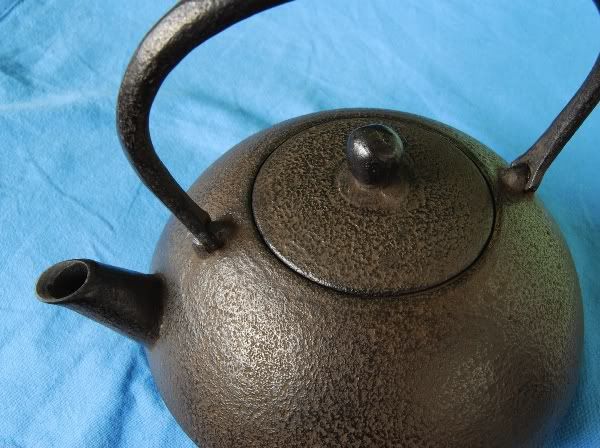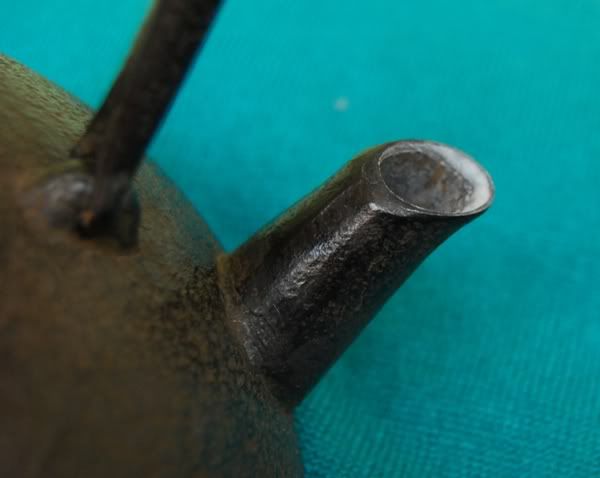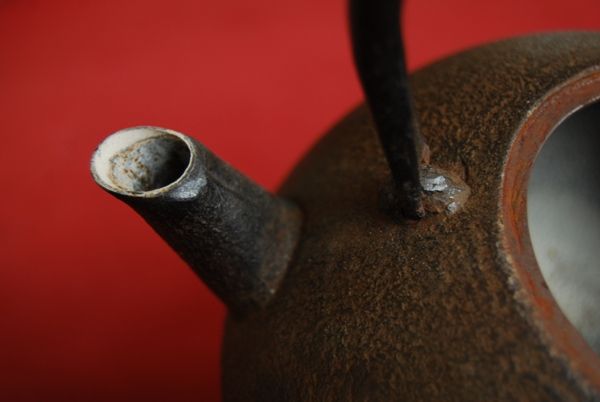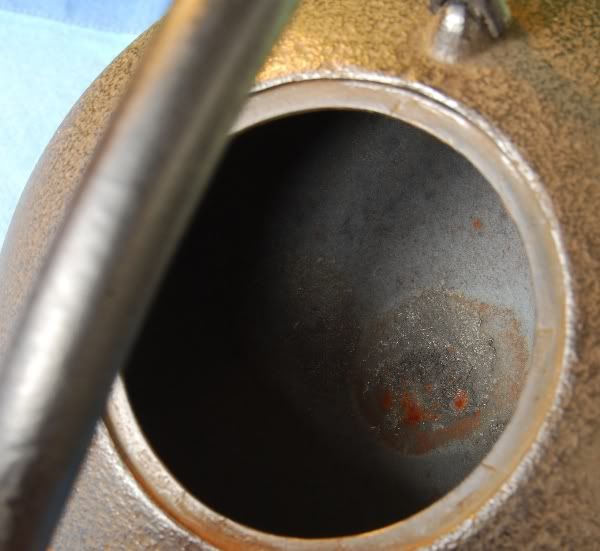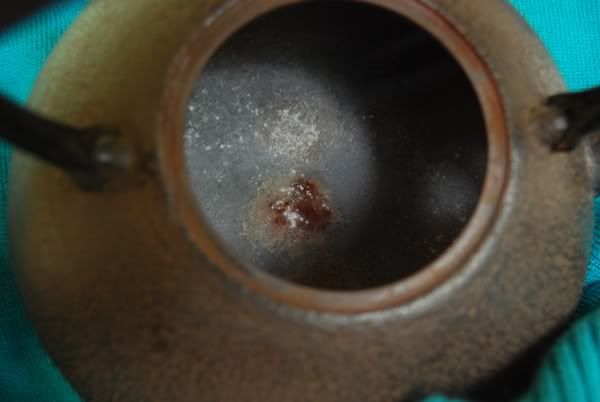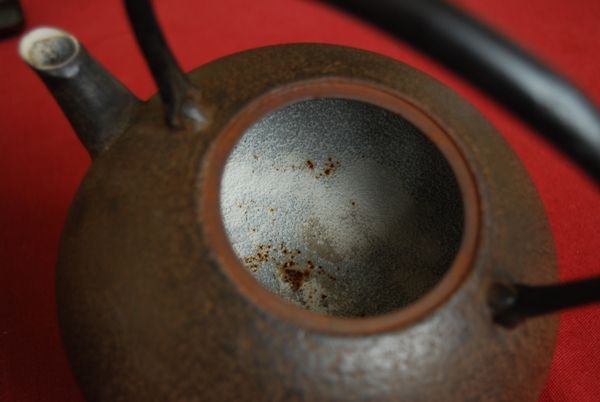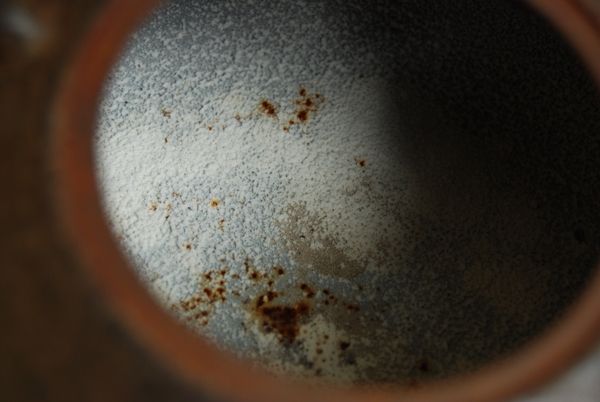I'm just going outside, and maybe some time.
04 October, 2010
02 October, 2010
The Aging Tetsubin II
Has it really been over two years since we bought our tetsubin? Time flies! I think that we bought it from Artistic Nippon, and it has served us very well. I think it's a perfect pu'er pot. It brings out the mineral-like characteristics of the tea, and swells it nicely.
(Silver kettles are not really my thing - and we don't drink a huge amount of wulong.)
Here's our little baby when it was newly arrived, as described in "Nembu Tekki":
The original kettle
As yet unaffected by use! Note the particularly clean spout, shown above. After one year, I took the following photograph (from "The Aging Tetsubin"), in which you can see some chalk accumulating:
The spout after one year
Now our pot is coming on for being two-and-a-half years of age, and it has quite a build-up:
The spout after two years
However, most interesting is what's been happening on the inside. Shown below is the original pot - note the orange spots of rust that came with it (and which are entirely normal for tetsubin), and the central mark which is a result of the fabrication process:
The original interior
After one year, it looked as shown below, where the rust-spot has grown to cover most of the fabrication blob, and where some chalky sediment has been accumulating:
The interior after one year
Now, after two years of heavy use, the base is almost entirely coated:
The interior after two years
...which we can see a little more clearly if we zoom in:
Detail of the interior, after two years
I am very careful not to disturb the interior of the kettle - we pour water in, pour water out, and dry it by leaving it on the warm hob for a moment after each session. So, the above has accumulated simply through use - between sessions, it sits entirely dry.
We use spring water for almost all of our sessions - had we used the tap water here, it would no doubt be several orders of magnitude more white. Even with "good water", the process is obvious.
So, don't fear a little chalk or the odd spot of rust. I remember seeing some old kettles in which the sediment had formed a thick mat inside the kettle. I rather like it; it is like the patina on a teapot - a sign of use.
Subscribe to:
Comments (Atom)


